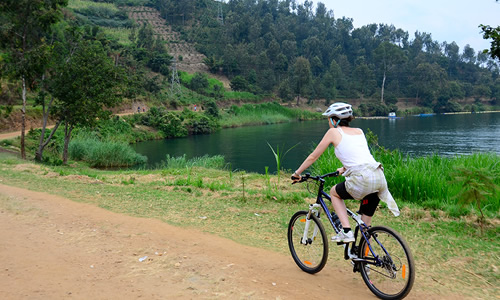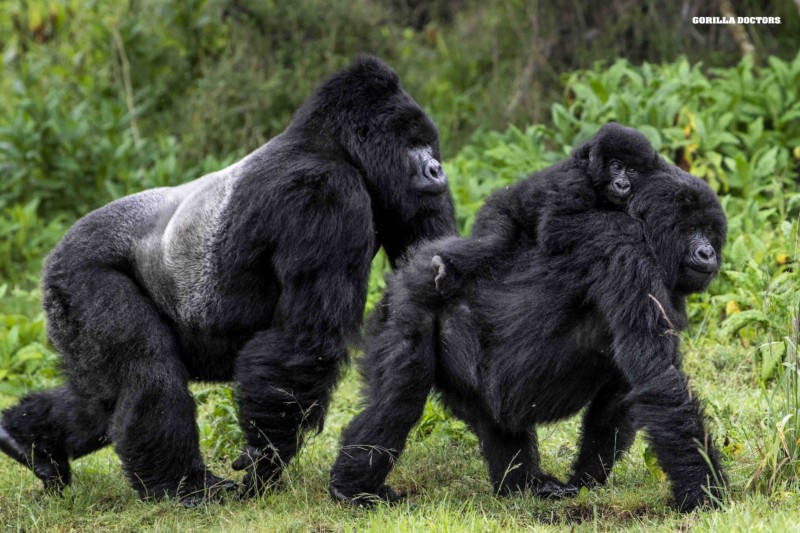5 Facts about Leopards
5 Facts about Leopards : Leopards (Panthera Pardus) are large carnivores and one of the 5 extant species in the genus Panthera member of the cat family, leopards are powerfully built with long bodies, relatively short legs and broad head. In the whole world, there are nine species of leopards distinguished by their unique characteristic of their coats which range from tawny or light yellow in warm, dry habitats to reddish – orange in dense forests.

The coats of leopards are covered in dark, irregular spots known as rosettes, these spots vary in size depending the type of the leopard. In East Africa leopards, the spits are circular and in southern African leopards they are square.
Leopards in Uganda are found in several conservation areas including Kidepo Valley national park, Queen Elizabeth national park, Lake Mburo national park and Semuliki national park.
Leopards are very interesting animals and are one of the most sough for animals on an African safari, below are the 5 interesting facts about leopards.
- Leopards are solitary animals
Leopards are solitary animals which is so typical to the cat family except lions which live a social lifestyle in prides, it luck to come across leopards strolling in pair and when you do just know it is a mating season. A female leopard normally signals her readiness to the male by the scent of the territory markers such as her urine.
Leopards will mate for about 70 – 100 times a day for 4-5 or 6 days and even hunt together during this time, mating is followed by a gestation period for three months and the birth of cubs of which only 2 or 3 will have chances of surviving. After this, the male leopard retreats back to its solitary lifestyle.
- Leopards are the smallest of the large cat family
In size, leopards are the smallest members of the large cat family and this has played a role in making them the mist agile climbers of all the large cats. The habitat of leopards is mostly trees and they do this to escape midday heat and eat their prey in peace.
Leopards grow up to approximately 92 to 190 centimeters (3 to 6.2 feet) with their tail adding about 99 centimeters to their general body length. A typical Male leopard weighs about 36 to 75 kilograms and female leopards weigh 21 to 60 kilograms.
The size of the leopards that is being the smallest in the cats family has nothing to do with their strength as they can singlehandedly carry up to 50 kilograms of the prey up the tree.

- Leopards are not picky eaters
Leopards are noticeably not picky eater, there are carnivores animals and the diversity in their carnivores diet has had a positive impact on their survival in the wild.
Leopards can eat almost any vertebrate from reptiles, fish to warthogs, zebras, antelopes and the wildebeests. However, the leopards a preference from medium sized animals like antelopes. Leopards can survive without a need for water as they get the water content from their prey they feed on.
- Leopards are ambush predators
Leopards are categorized as ambush predators, they stalk their target from a few meters away waiting in ambush in case the target moves towards the direction of the leopard. Once the prey is close enough, the leopard will kill it in one swift yet ferocious move usually by grabbing the neck and breaking it.
For the smaller vertebrates such as rats, a single swat of the paw is sufficient to the hunt, the speed of the leopard can go up to 35 miles per hour and it acts as an advantage in hunting adventures of a leopard. For a leopard’s offspring, hunting starts at the age of 3 to 4 months and is the tactics are polished over time.

- Leopards are adaptable to their surroundings.
Leopards can live any type of habitat which is why they are found in various conservation areas in different regions of Uganda and the world, leopards can be found in rainforests, woodlands, savanna grasslands, mountains, shrublands or swampy areas.
Leopards can thrive in any environment they are place in and this is a distinctive characteristic they have from the rest of the members of the large cat family such as lions that endeavor to conquer territory near water sources to flourish.
In Uganda, leopards are found in Kidepo Valley national park, Murchison Falls national park, Queen Elizabeth national park and Lake Mburo national park.







